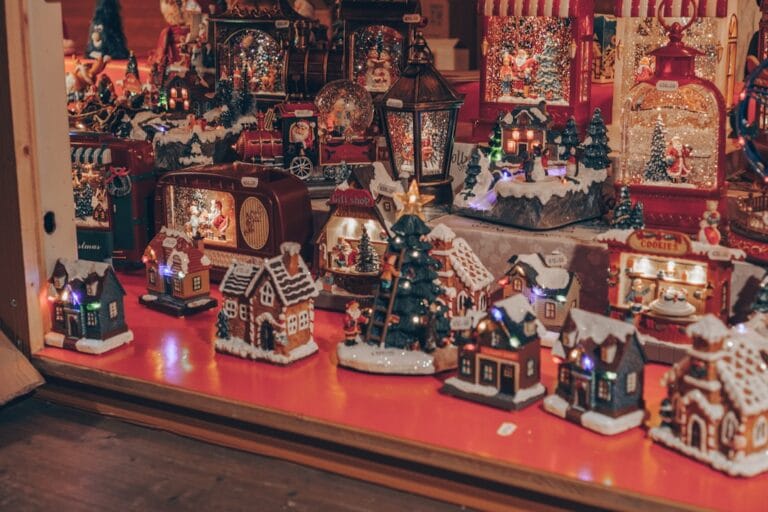Advent calendars are a fun way to count down to Christmas from December 1 to 24. Each day, you open a door or window to reveal a small surprise, like chocolates, toys, or other treats. Originating in 19th-century Germany, early methods included chalk marks, candles, and religious images to mark the days. Over time, these evolved into the calendars we know today, with American soldiers popularizing them in the U.S. after World War II.
Modern Advent calendars come in many styles, from traditional paper designs to reusable wooden ones filled with chocolates, beauty products, toys, or even beverages. They’re now a key part of holiday traditions, blending festive fun with a sense of anticipation for Christmas.
History of Advent and Calendar Origins
Religious Roots of Advent
The origins of Advent trace back to the 4th and 5th centuries, when it was observed as a solemn period of fasting and prayer. Unlike today’s festive countdowns, the focus was on spiritual reflection and devotion.
The word "Advent" comes from the Latin term adventus, meaning "coming" or "arrival", referring to the anticipation of Jesus’ birth. These early practices played a key role in shaping the countdown traditions we see today.
Early Christmas Countdown Methods
Over time, the way people marked the days leading to Christmas began to change. In 19th-century Germany, Protestant families developed creative ways to count down to the holiday.
Here are three popular methods they used:
- Chalk Marks: Families would draw chalk lines on door frames or walls, erasing one each day as Christmas approached.
- Advent Candles: Some households used a single candle marked with 24 lines, burning it down a bit each day. Others lit a separate candle for each of the 24 days.
- Religious Images: Families displayed a new religious picture or biblical scene daily, adding a visual element to the countdown.
These early traditions eventually inspired the structured Advent calendars we know and love today.
Development Through Time
1946 Post-War Production
In 1946, mass production after the war turned Advent calendars from niche products into widely recognized holiday staples. This shift paved the way for the diverse designs we see today.
Present-Day Advent Calendars
American Introduction
After World War II, American soldiers brought the tradition of Advent calendars back from Germany, introducing it to U.S. households. This sparked the popularity of the tradition and paved the way for the variety of Advent calendars we see today.
Popular Modern Styles
Today’s Advent calendars come in a wide range of themes and include something for everyone. Here are some of the most common types:
| Calendar Type | Highlights |
|---|---|
| Traditional Paper | Features festive or religious artwork behind each daily window. |
| Chocolate-filled | Offers a sweet treat for each day, perfect for kids and adults alike. |
| Beauty/Cosmetic | Includes small skincare or beauty products to enjoy throughout December. |
| Toy-based | Packed with collectible toys or themed play items for younger audiences. |
| Craft Beer/Wine | Designed for adults, featuring specialty beverages for each day. |
| Reusable Wooden | Made from sturdy materials, with refillable compartments for yearly use. |
A Key Part of Holiday Traditions
Whether physical or digital, Advent calendars have become an essential part of holiday celebrations. From uncovering small surprises to exploring interactive online versions, they add excitement to the December countdown, blending religious and festive elements into a cherished ritual.
sbb-itb-df5c804
The Surprising History of Advent Calendars Revealed …
Trivia About Christmas
Advent calendars have become a fun and educational way for families to count down to Christmas. Adding trivia packs to the mix brings an extra layer of enjoyment. Much like how Advent calendars have evolved from simple treats to more elaborate experiences, trivia packs offer a fresh take on this festive tradition. They provide a fun and interactive way to enhance the holiday countdown.
These trivia packs dive into topics like Christmas traditions, holiday movies, festive music, and seasonal customs. The packs are divided into four rounds, including a picture round, making them both engaging and entertaining.
| Trivia Pack Features | Details |
|---|---|
| Format Options | Available in PDF and PowerPoint |
| Questions per Pack | Over 40 themed questions |
| Round Structure | 3 Q&A rounds + 1 picture round |
| Delivery Method | Instant email delivery |
| Usage Settings | Perfect for home, bars, or virtual events |
Families can pair their daily Advent calendar tradition with a round of themed trivia, creating special moments during the holiday season. Whether it’s a cozy family night or a larger virtual gathering, these trivia packs fit a variety of settings.
Summary
The history of Advent calendars reflects a journey from their roots in 19th-century Germany to becoming a beloved global holiday tradition. What began as a simple way to mark the days until Christmas has grown into a festive custom enjoyed by people around the world.
Over time, Advent calendars have shifted from basic countdowns to creative designs filled with surprises, blending old traditions with modern touches. This evolution has made them a cherished part of holiday celebrations, adding excitement and joy to the season in a way that continues to connect with people today.






